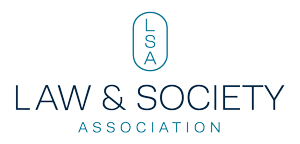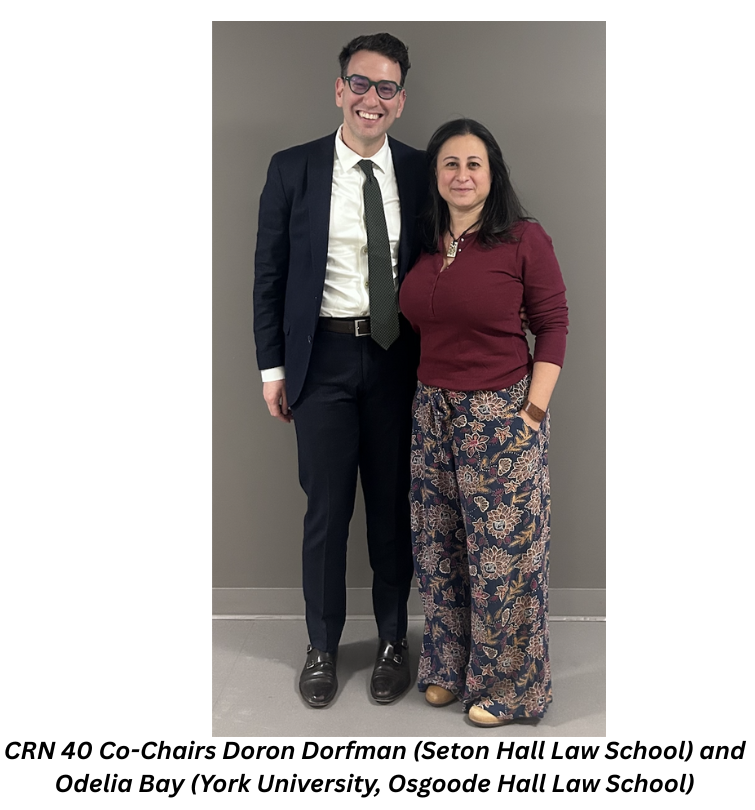Collaborative Research Networks (CRNs) play a vital role within the Law and Society Association’s broader intellectual communities. CRNs provide a platform for LSA members to connect, exchange ideas, and collaborate with other scholars who share common interests. Through these networks, members not only organize sessions at the LSA Annual Meeting but also develop cross-disciplinary and cross-national research projects. CRNs help build deeper intellectual and professional connections among scholars, helping build a stronger sense of community within LSA and encouraging meaningful research collaborations.
CRNs can be based on a particular region (e.g., African Law and Society, East Asian Law and Society, South Asia), methodology (e.g., Critical Research on Race and the Law, Feminist Legal Theory), or subject area (e.g., Biotechnology, Bioethics and the Law, Citizenship and Immigration, Labor Rights, Regulatory Governance). Themes can be narrow or broad in scope.
For our new CRN Spotlight series, LSA will periodically showcase one of our 50+ Collaborative Research Networks. Read on to learn more about CRN 40: Disability Legal Studies.
Unlike many students, Doron Dorfman entered graduate school with a clear goal. He was determined to teach and conduct empirical research on disability law. But in 2014, Stanford University wasn’t sure what to do with him.
“There were no people doing disability studies at Stanford in those days…I went from department to department to find people who might be interested,” he explains. “I remember I was in the political science department and they said, ‘Oh, social security benefits!’ Because for them disability was social security benefits…it was a very siloed, very marginalized area.”
Professor Dorfman, who now works at Seton Hall Law School, became the first person to teach disability studies at Stanford, and one of the first scholars to talk about disability identity in legal scholarship. He remains one of few researchers to do empirical work in the area—but as the topic of disability becomes more mainstream, he hopes more scholars will join him.
“I think what’s really hard is that disability’s kind of new…its really trendy, but it’s still a little new, so the old guard maybe doesn’t think about it all the time,” he says. “Even, for example, when you go on the job market. No school, almost, is looking for disability rights…I hope that one day I will open listings for law professors that will actually say, ‘We are looking for a disability rights person.’”
This is one of the goals of CRN 40: Disability Legal Studies, which Professor Dorfman co-chairs alongside York University Osgoode Hall Law School doctoral candidate Odelia Bay. Founded by University of Haifa Professor Sagit Mor, Professor Dorfman’s mentor, as well as University of Hawai‘i at Mānoa Professor and outgoing Law and Society Review co-editor Katharina Heyer, CRN 40 originally had the unwieldy task of justifying its own existence amongst fellow law and society scholars yet to develop the habit of identifying the “disability angle” inherent to most research areas. As intersectionality has become more firmly entrenched in sociolegal inquiry, and especially in the wake of the Covid-19 pandemic, the group has been able to focus more of its energy on gathering scholars interested in disability together. But recruitment, for lack of a better term, remains key to the CRN’s activities. On one occasion, Professor Dorfman presented a paper about service dogs and emotional support animals on a panel held by CRN 42: Law and Emotion.
“There’s a lot of people who might not have come to a disability panel, who came to that panel, and that gave us a lot of exposure,” says Professor Dorfman. “I vividly remember presenting that paper and getting a lot of feedback and attention.”
“What used to happen,” he continues, “is that there would be a panel, and there would be a person who studies disability on the panel. We wanted to have a whole space where all people who do disability come together…Disability studies is such a broad interdisciplinary field, so we can have people from all areas, right? Every area intersects with disability, from immigration to criminal law to health.”
Despite its relative obscurity over the years, disability scholarship and advocacy has a rich and complex history. In 1976, a UK disability rights organization called the Union of Physically Impaired Against Segregation (UPIAS) developed what came to be called the “social model of disability,” positing that society itself, rather than physical impairment, “disabled” people by failing to provide the accommodations necessary for individuals with unique needs to participate in daily life. This radical departure from the medical model, which framed disability as merely the result of unfortunate medical circumstances, challenged the prevailing view of disability as a burden to be shouldered solely by individuals and their loved ones. By acknowledging the inherent value in all people, including those with various medical challenges, and adjusting physical and social infrastructure accordingly, society could collectively make room for everybody to live full, rich lives. This concept is a key facet of the “Disability Justice” movement, developed in 2005 by a radical dance group in Berkeley, CA, Sins Invalid, in a manifesto calling for increased intersectionality and inclusivity amongst disability activists.
The social model revolutionized perceptions and discourse regarding disability—but in some ways, it overcorrected in its emphasis on the collective over the individual.
“Through the years, there has been a lot of criticism of the social model, because it excludes the experiences of the body, of pain, and of what it actually means to be disabled,” says Professor Dorfman. “And it also was really all about physical disability, not so much mental disability, developmental disability, or chronic illness, for example.”
To address this issue, Professor Dorfman and his peers favor the more nuanced biopsychosocial model, which integrates physical limitations, mental perceptions, and social environments in its definition of disability.
“What the biopsychosocial model did is bring impairment back into the conversation…being disabled is not always fun and games. There is a role for pain, and there is a role for all of those issues,” Professor Dorfman says.
Equipped with this more refined framework, as well as a mixed-methods, experimental approach, Professor Dorfman has spent the better part of the last two decades making his own mark on the field of disability studies. He has written about perceptions of disability fraud in public settings, Covid-era mask shaming (in both directions), and the experience of claiming social security benefits as a disabled person. His article, “Re-Claiming Disability: Identity, Procedural Justice and the Disability Determination Process,” won an award from the Library of Congress and was discussed at length in a federal court decision. He has testified before the United States Congress on the relationship between vaccine requirements and anti-discrimination law, and some of his writing formed the basis of a wave of lawsuits regarding mask accommodations in schools.
“That was really wonderful, to see how scholarship can really influence legal mobilization,” he says.
Professor Dorfman attributes his success, in part, to his involvement with the CRN.
“I found out about the CRN, and LSA more generally, when I started grad school,” he says. “So I grew up with Law and Society. The conference has been a part of my academic journey since day one.”
Like all Collaborative Research Networks, CRN 40 benefits from a diverse mix of scholars, representing various regional differences in disability studies. U.S. members tend to explore disability studies from a humanities angle that centers literature and critical studies. Members from Canada, like Professor Bay, as well as various European countries, are more focused on policy and social change. Each year, CRN 40 holds a panel on Canadian Disability Law; when possible, they collaborate with other CRNs, such as CRN 42 and CRN 09: Law and Health.
“We invite CRNs who talk about other marginalized identities to think about doing a panel on the experiences of those in their community with a disability,” says Professor Dorfman. “We also invite people who have real life experiences to come and talk at our CRN at Law and Society….people who are professionals with disabilities, whether they’re professors or judges.”
Disability studies is no longer as peripheral to the law and society world as it once was—but after watching the post-Covid-19 boost in disability rights awareness peter out with minimal change, Professor Dorfman is determined to continue pushing CRN 40 forward with the same stubborn focus that he brought with him to Stanford—which now explicitly recruits disability studies scholars—eleven years ago.
“People with disabilities are sometimes perceived as really pushy and demanding,” he admits, “because they are navigating a world that is not made for them. They’re trying to get a seat at the table so they can change the world by pushing for greater diversity.”



